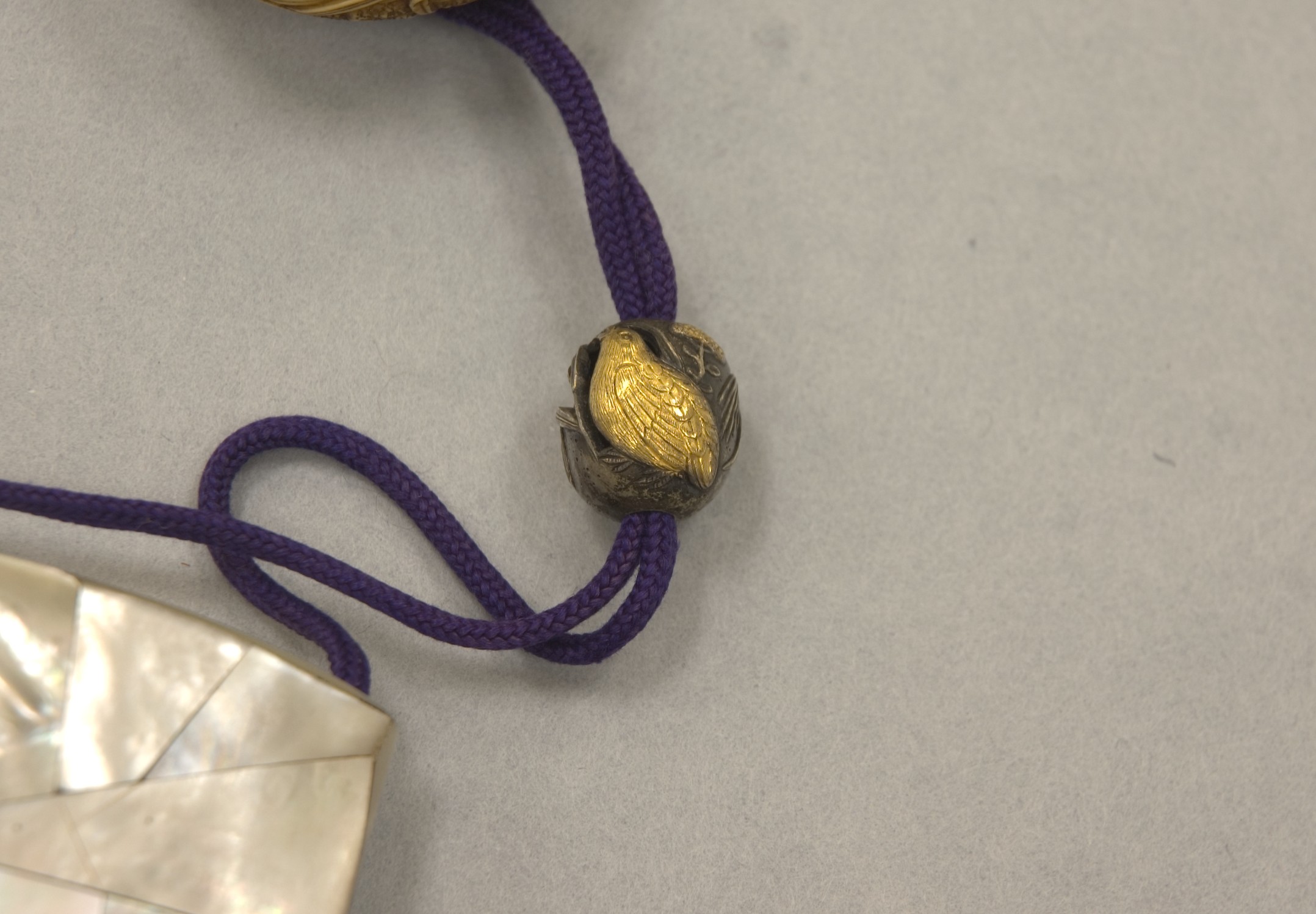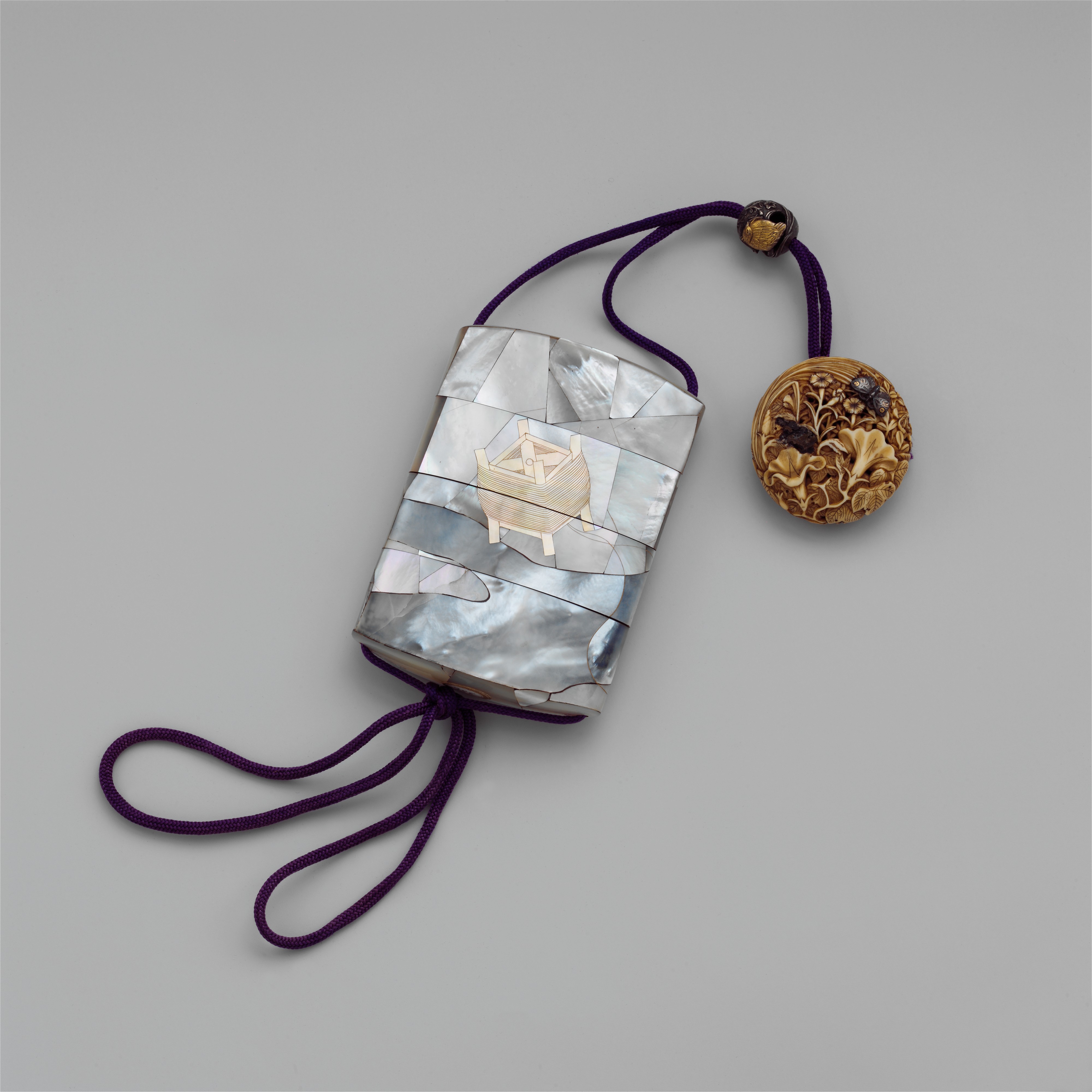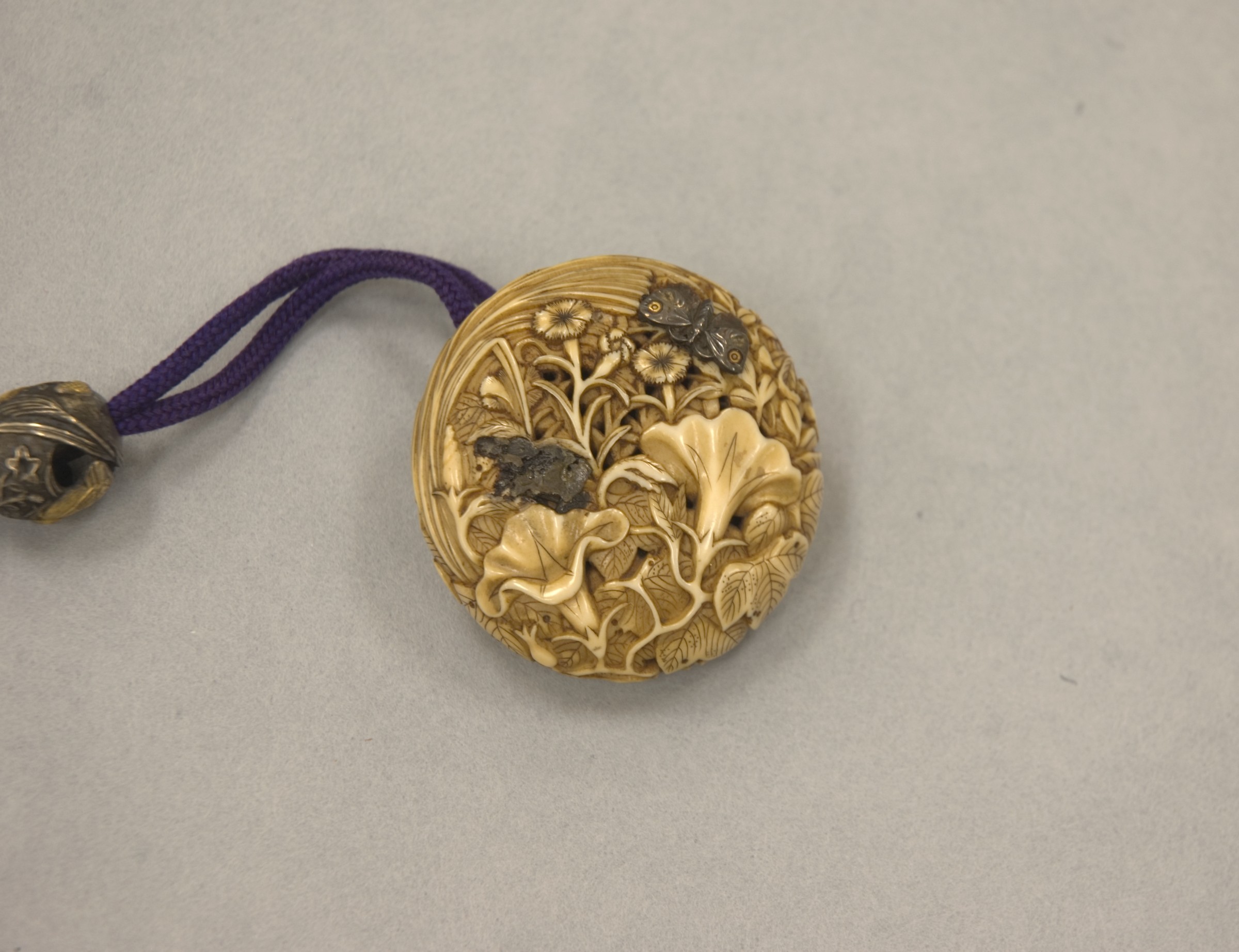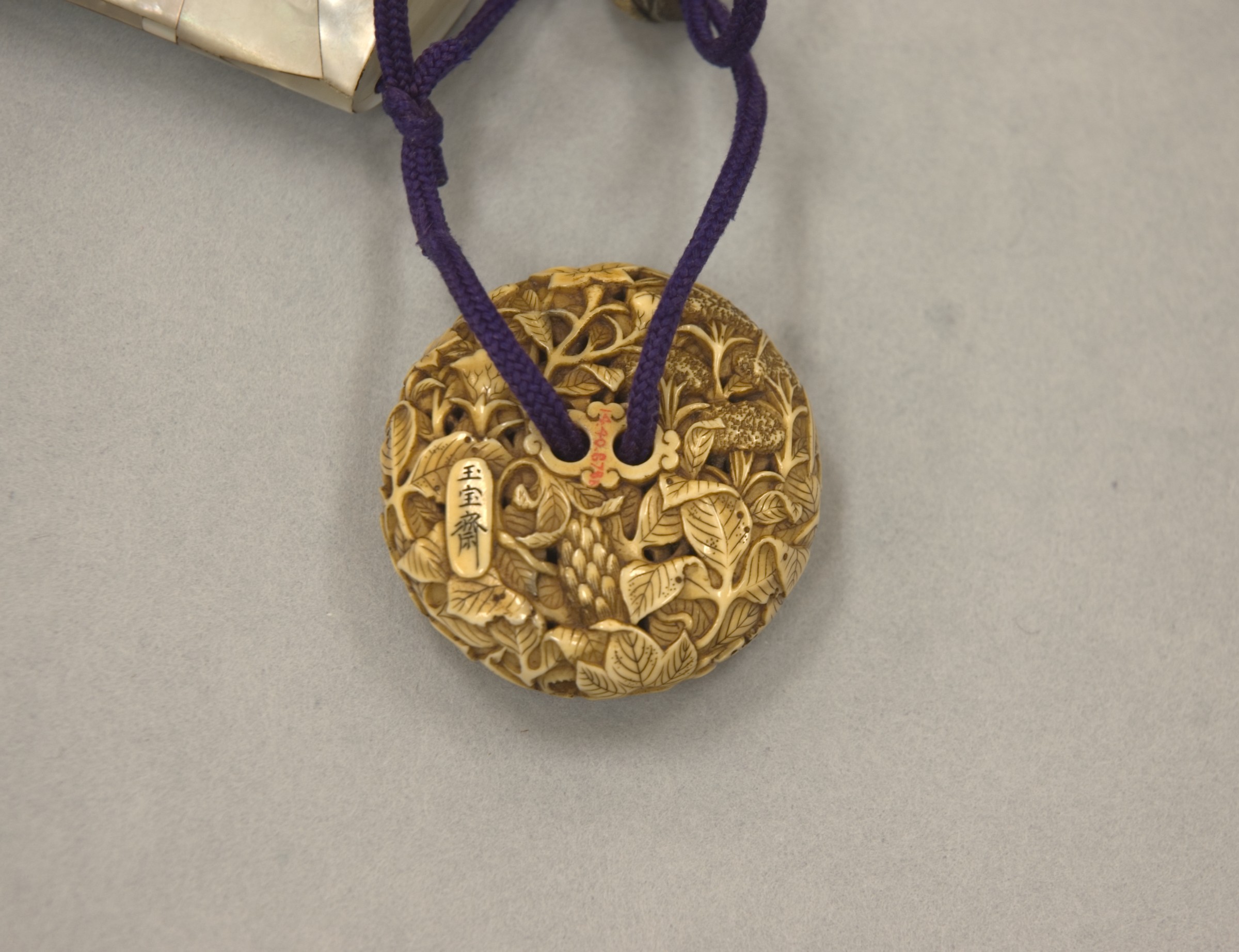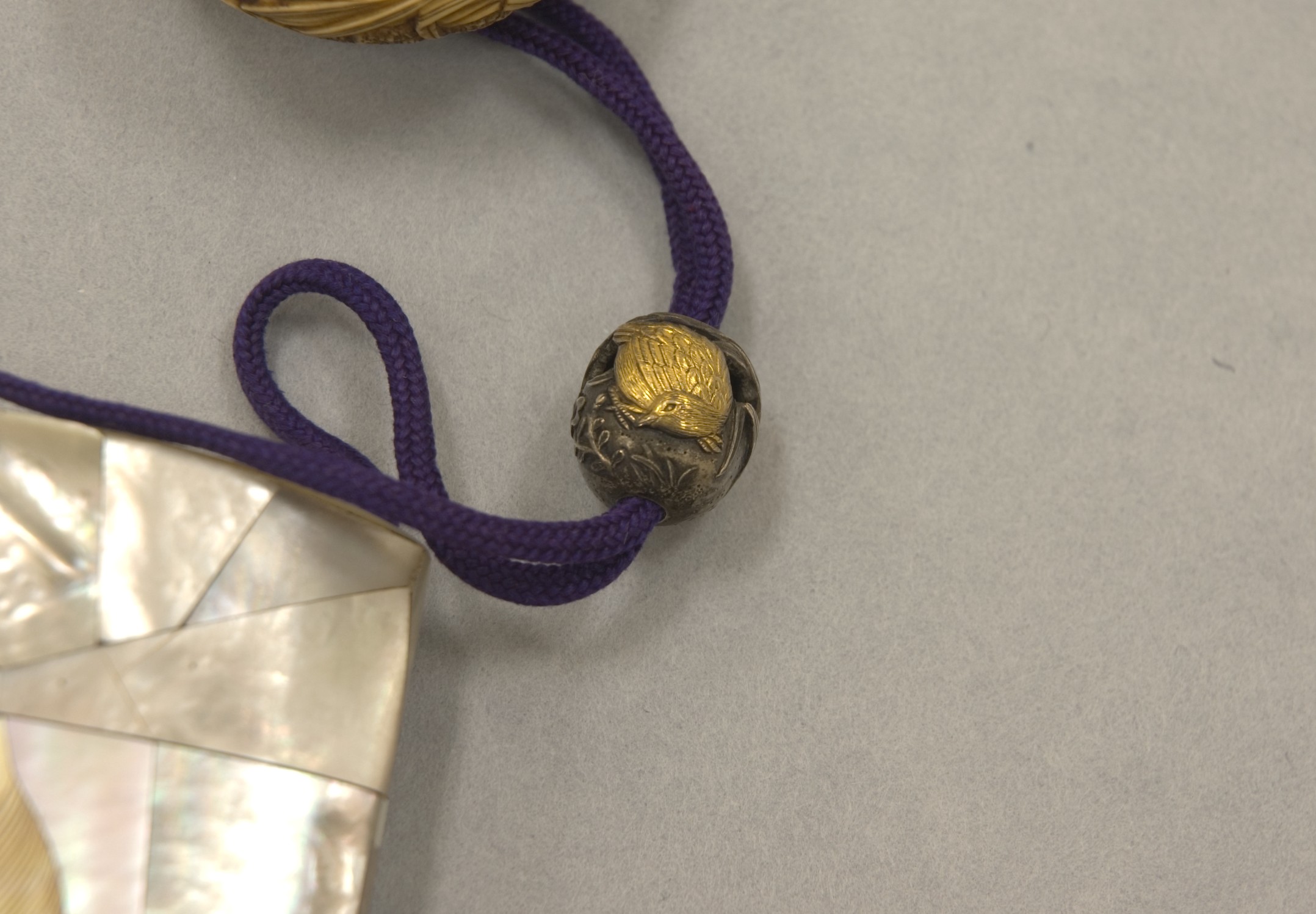Inrō with Tanabata Story of the Weaver and the Herdboy
Nomura Kyūkoku Japanese
Not on view
One of the relatively large pieces of mother-of-pearl that comprise the surface of this inro was colored with gold and incised to create an image of a silk winder, identifying the imagery as a representation of the Milky Way. The winder refers to the Weaver Star, who is tragically separated by the Milky Way from her lover, the Cowherd Star. The two are allowed to meet only once a year, a union that is the basis for Tanabata, or the Star Festival, in Japan, held annually between July 7 and August 7. Over time, this festival has been conflated with Obon, a celebration of one's ancestors.
Due to rights restrictions, this image cannot be enlarged, viewed at full screen, or downloaded.
This artwork is meant to be viewed from right to left. Scroll left to view more.


